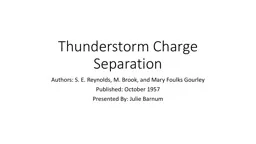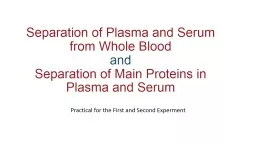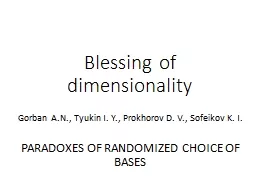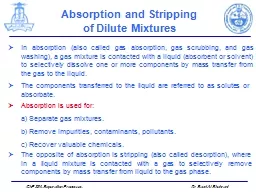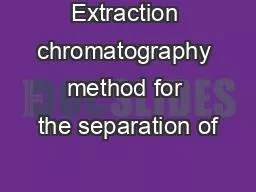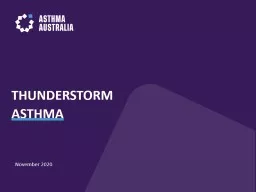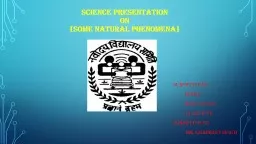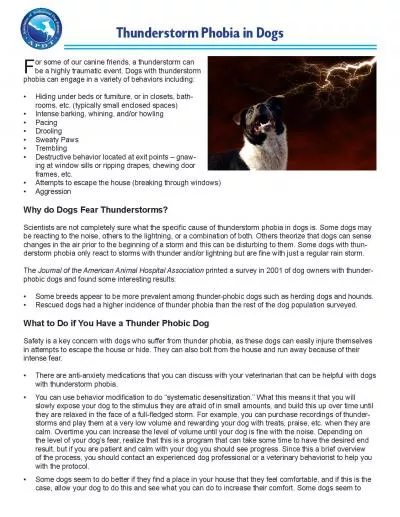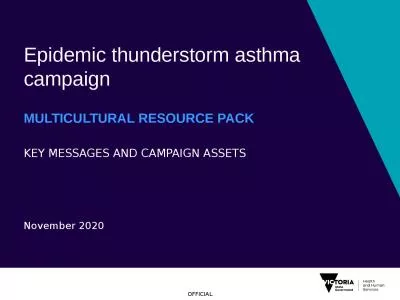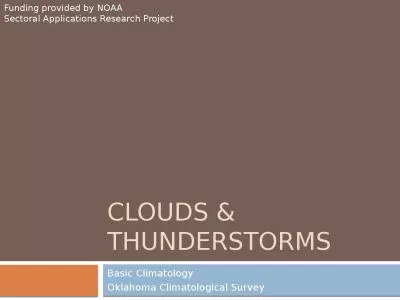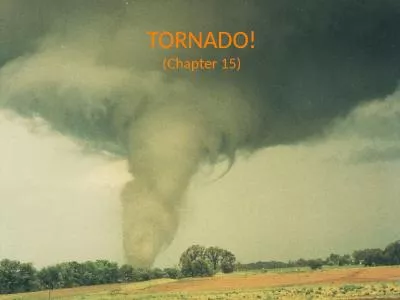PPT-Thunderstorm Charge Separation
Author : ellena-manuel | Published Date : 2017-09-07
Authors S E Reynolds M Brook and Mary Foulks Gourley Published October 1957 Presented By Julie Barnum Introduction Development of Initial Tstorm Knew that lightning
Presentation Embed Code
Download Presentation
Download Presentation The PPT/PDF document "Thunderstorm Charge Separation" is the property of its rightful owner. Permission is granted to download and print the materials on this website for personal, non-commercial use only, and to display it on your personal computer provided you do not modify the materials and that you retain all copyright notices contained in the materials. By downloading content from our website, you accept the terms of this agreement.
Thunderstorm Charge Separation: Transcript
Download Rules Of Document
"Thunderstorm Charge Separation"The content belongs to its owner. You may download and print it for personal use, without modification, and keep all copyright notices. By downloading, you agree to these terms.
Related Documents

